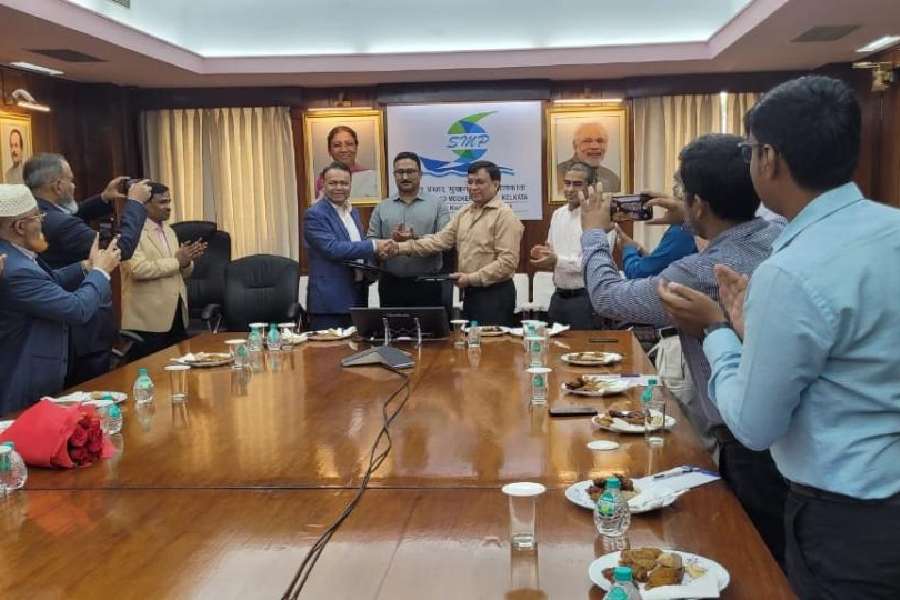The much-awaited transshipment of goods to India’s Northeast through Bangladesh is likely to start in January with the commencement of a weekly container vessel service between the ports in Calcutta, and Chittagong, Mongla, Pyra and Pangaon in Bangladesh.
A memorandum of understanding to this effect was signed between the Syama Prasad Mookerjee Port and the Saif Powertec Ltd (SPL) Bangladesh, a leading cargo handling company, on Monday. The objective of the MoU, said the two sides, was to aid the faster and cheaper movement of export cargo to Bangladesh and transit cargo to the Northeast.
“The distance from Calcutta to Agartala is about 1,619km via Siliguri but it would be only 575km via Chattogram port. While it takes seven days to cover the distance on the road, it may take four days via Chattagram port from Calcutta,” said Tarafdar Mohammad Ruhul Amin, the managing director of SPL Bangladesh.
He said the SPL would deploy a ship that would carry 180 boxes (containers) in each voyage.
India and Bangladesh signed an agreement on the use of Chittagong and Mongla Ports for the movement of goods between the two countries in October 2018 and finalised the standard operating procedures for implementing the pact a year later as part of a larger plan to enhance connectivity.
The plan, however, did not start as Bangladesh had to finalise the Customs procedures and put in place the necessary logistics.
After completing the processes and organising several comprehensive trials for the transshipment to northeastern states using Chittagong and Mongla ports, the National Board of Revenue in Bangladesh issued a permanent transit order in April, setting the stage for the implementation of the plan drawn up by the leadership of the two countries.
“They (SPL) will deploy two container vessels to begin with. Our team will shortly visit Bangladesh to promote the new service. The service will start from January,” Rathendra Raman, chairman of Shyama Prasad Mookerjee Port, formerly Calcutta Port Trust, said.
The multimodal trade route will involve the movement of cargo from Calcutta to Chittagong, Mongla Port, Pyra port and Pangaon inland container terminal, said sources aware of the development.
Chittagong is Bangladesh’s main port and handles
more than 90 per cent of the country’s foreign trade. Mongla is the country’s second largest sea port on the Bay of Bengal.
“Not only will the two-way trade volume between the two countries (presently valued at over $16billion) go up, this maritime connectivity will also result in a win-win outcome for both the countries as lower transportation cost to the Northeast will result in lower prices of goods and Bangladesh will benefit from transit fee,” said Tarafdar.
According to him, the SPL research team has found that there will be at least 25 to 30 per cent cost savings in transportation through Bangladesh.
“Trade volumes between India and Bangladesh are on the rise.... There are capacity constraints at land ports. A higher degree of maritime connectivity can solve this problem,” said Tarafdar.
While both the sides are bullish about the outcome of the first-of-its-kind cargo vessel service, there are also a few bottlenecks like the Bangladesh Customs rule that still does not allow clubbing export and transit cargo together in a vessel.
The Indian government is in talks with Dhaka to ease the stipulation and allow a vessel service to book both types of cargo in a vessel together, said a source. It is believed that if Bangladesh Customs allows it, vessel services would be able to offer more competitive service as they would be able to secure adequate volume in every voyage.











